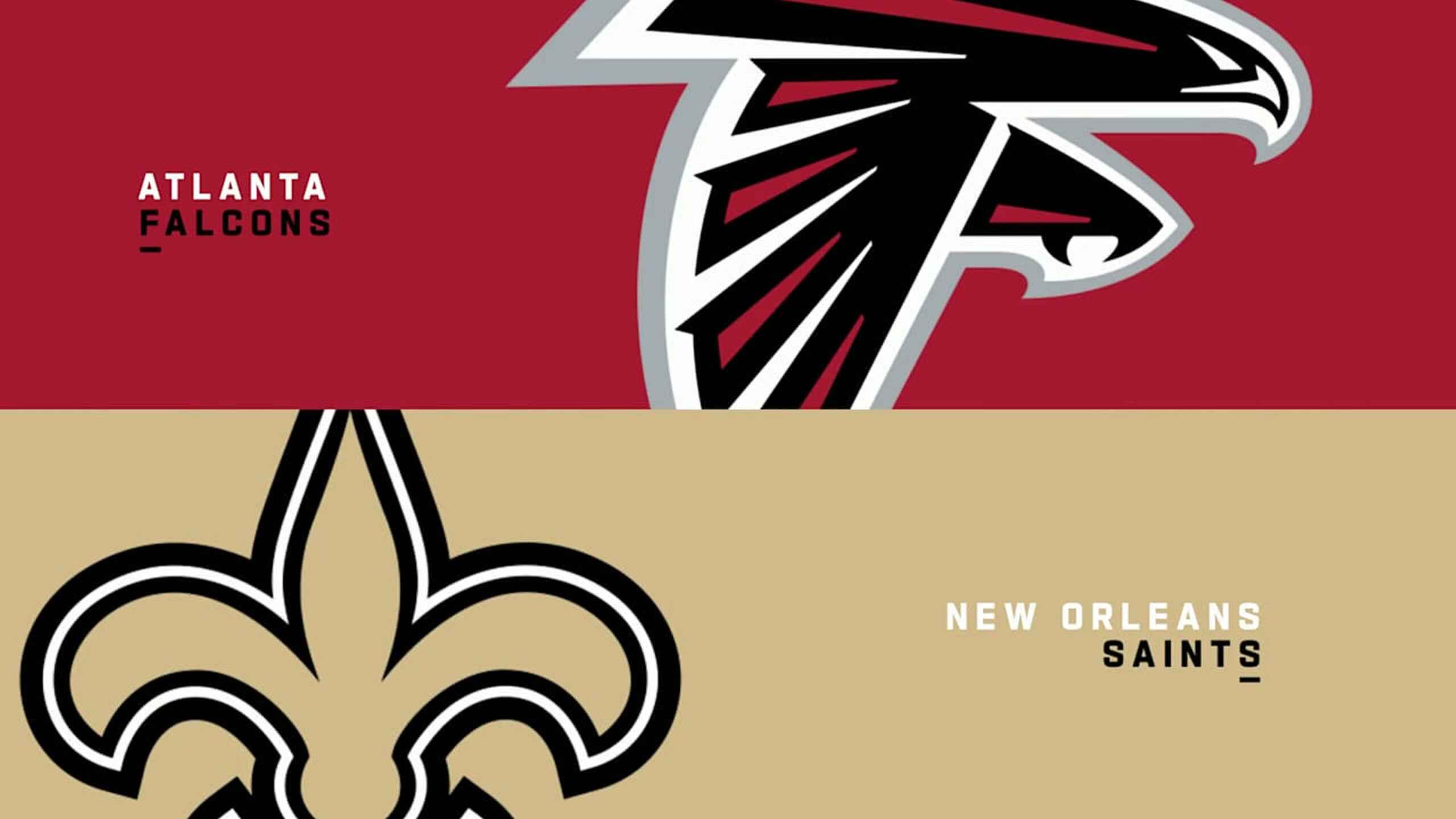This article delves into the key performers and statistics from the Atlanta Falcons vs. New Orleans Saints rivalry, providing an in-depth analysis of player performances, team stats, and historical context.
Historical Context of the Rivalry
The rivalry between the Atlanta Falcons and New Orleans Saints is one of the most intense in the NFL, characterized by passionate fan bases and memorable matchups. Established in 1967, this rivalry has evolved over the decades, with both teams vying for dominance in the NFC South. The proximity of the two cities adds fuel to the fire, as the games often carry significant implications for playoff positioning. Historical moments, such as the infamous “Bountygate” scandal involving the Saints, have further intensified the competition. Understanding this backdrop is crucial for appreciating the stakes in every matchup.
Key Players to Watch in 2023
As the 2023 season unfolds, several players stand out as potential game-changers. For the Falcons, quarterback Desmond Ridder is poised to take on a pivotal role, showcasing his growth and ability to lead the offense. On the Saints’ side, quarterback Derek Carr brings experience and a strong arm, making him a key player to watch. Additionally, running back Bijan Robinson for Atlanta and wide receiver Chris Olave for New Orleans are expected to make significant impacts, potentially swinging the outcome of games in their favor.
Offensive Strategies Employed by Both Teams
The offensive strategies of the Falcons and Saints differ significantly, reflecting their unique strengths. The Falcons are likely to emphasize a run-heavy approach, leveraging their strong offensive line and dynamic running backs. In contrast, the Saints may focus on a balanced attack, utilizing short passes and quick strikes to exploit defensive weaknesses. This section analyzes key plays from both teams, illustrating how they plan to outmaneuver each other on the field.
Defensive Strengths and Weaknesses
Defense can often dictate the outcome of high-stakes games. The Falcons have shown improvement in their defensive unit, with players like Grady Jarrett anchoring the line. However, they must address vulnerabilities in their secondary. The Saints, known for their aggressive defensive style, feature a formidable linebacker corps led by Demario Davis. This analysis evaluates how each team’s defensive strategies could impact their performance against the opposing offense.
Quarterback Performances: A Comparative Analysis
Quarterbacks are the heartbeat of any football team, and the performances of Ridder and Carr will be crucial in determining the success of their respective teams. Ridder’s ability to manage the game and make key throws under pressure will be tested against the Saints’ formidable defense. Meanwhile, Carr’s experience and decision-making skills will be essential for the Saints to capitalize on scoring opportunities. This section compares their statistics, including passer ratings and touchdown-to-interception ratios, to provide a clearer picture of their impact on the game.
Impact of Injuries on Team Performance
Injuries can dramatically alter a team’s dynamics and performance. Both teams have already faced injury challenges in the preseason, with key players potentially sidelined. For instance, if the Falcons lose a key offensive lineman, it could hinder their run game. Similarly, the Saints must navigate any injuries to their receiving corps, which could limit Carr’s options. This section discusses the potential implications of these injuries on both teams and how they might adapt their strategies accordingly.
Fan Engagement and Home Field Advantage
The role of fans in shaping the atmosphere of a game cannot be overstated. The Saints enjoy a significant home-field advantage at the Superdome, where the noise level can disrupt opposing offenses. Conversely, the Falcons’ fans are known for their passionate support, especially during critical moments. This section explores how fan engagement influences team morale and performance, particularly in high-stakes matchups.
Recent Matchup Statistics
Examining recent games between the Falcons and Saints reveals patterns that may inform future encounters. The last few matchups have been closely contested, with both teams displaying their strengths and weaknesses. By analyzing statistics such as scoring margins, turnover ratios, and individual player performances, we can gain insights into what to expect in their upcoming games.
Coaching Strategies and Decisions
The coaching staff’s strategies play a vital role in the outcome of games. Both teams have experienced coaches who are adept at making in-game adjustments. This section evaluates the coaching philosophies of Arthur Smith for the Falcons and Dennis Allen for the Saints, examining how their decisions shape game dynamics and influence player performance.
Player Development and Rookies to Watch
The emergence of young talent can significantly impact a team’s success. The Falcons and Saints have invested in developing their rosters, with several rookies poised to make an impact this season. This section highlights key rookies, such as Atlanta’s Matthew Bergeron and New Orleans’ Kendre Miller, and discusses their potential contributions to their teams’ success.
Statistical Trends: Offense vs. Defense
Analyzing the statistical trends of both teams’ offense and defense provides valuable insights into potential match outcomes. Key metrics, such as yards per game, third-down conversion rates, and points allowed, reveal how each team stacks up against the other. This section compares these statistics to identify potential advantages and weaknesses that could be exploited during matchups.
Future Implications of Current Season Performance
The performance of both teams in the current season can have lasting effects on their playoff positioning and future rivalries. The outcomes of their matchups could determine not only their standings in the NFC South but also their momentum heading into the postseason. This section discusses the broader implications of their performance and how it could shape the future of this storied rivalry.

Historical Context of the Rivalry
The rivalry between the Atlanta Falcons and the New Orleans Saints is one of the most intense in the NFL, characterized by a rich history filled with memorable moments and fierce competition. Understanding the roots of this rivalry provides insight into the emotional stakes involved whenever these two teams meet on the field.
The origins of the Falcons-Saints rivalry can be traced back to the 1960s when both franchises were established. The Saints joined the NFL in 1967, while the Falcons were founded in 1965. From the outset, their proximity—only about 400 miles apart—fostered a competitive atmosphere, with fans from both cities eager to claim regional bragging rights.
Over the decades, the rivalry has evolved, marked by numerous high-stakes games that have shaped the narrative between the two teams. The 1980s saw the rivalry intensify, with both teams vying for dominance in the NFC West. Notably, the Falcons’ victory in the 1991 season over the Saints marked a turning point, as it was one of the first times Atlanta truly established itself as a competitive force in the league.
As the years progressed, the rivalry became more than just a series of games; it morphed into a cultural phenomenon. The passionate fan bases of both teams contribute to the vibrant atmosphere during matchups, often turning games into electrifying events. The 2000s brought further drama, with both teams experiencing ups and downs, yet consistently providing thrilling matchups that would often come down to the wire.
Statistics reveal the competitiveness of their encounters. As of the 2023 season, the all-time series is closely contested, with both teams having periods of dominance. The emotional weight behind these games is palpable, as players and fans alike understand that each matchup carries significance beyond just the win-loss record.
One of the most memorable moments in this rivalry occurred in 2017 when the Falcons and Saints faced off in a game that showcased the intensity of their competition. The Falcons secured a dramatic victory, further fueling the fire of the rivalry. Such moments are etched in the memories of fans and players, reminding everyone involved of what is at stake during these matchups.
In recent years, the rivalry has been marked by a new generation of players who bring fresh energy and talent to the field. The emergence of star quarterbacks and dynamic playmakers has added layers to the competition, making each game a must-watch event. As both teams continue to evolve, their historical context serves as a foundation for future encounters, ensuring that the rivalry will remain fierce and exciting.
In summary, the historical context of the Falcons and Saints rivalry is steeped in tradition, competition, and passion. Each game is a chapter in a long story that continues to unfold, with fans eagerly anticipating the next installment in this storied rivalry.

Key Players to Watch in 2023
Identifying standout players is crucial for predicting game outcomes. In the intense rivalry between the Atlanta Falcons and the New Orleans Saints, certain players have the potential to significantly influence the results this season. Let’s delve into the key performers from both teams who are poised to make their mark.
- Atlanta Falcons:
- Desmond Ridder (Quarterback) – As the starting quarterback, Ridder’s development will be pivotal. His ability to read defenses and make timely throws can open up the Falcons’ offense. In 2022, he showed flashes of brilliance, and fans are eager to see how he builds on that performance.
- Bijan Robinson (Running Back) – The rookie sensation brings a dynamic presence to the backfield. His agility and speed make him a dual-threat, capable of both rushing and receiving. Expect Robinson to be a focal point in the Falcons’ game plan, especially in crucial moments.
- A.J. Terrell (Cornerback) – Terrell’s ability to lock down opposing receivers will be vital for the Falcons’ defense. His skills in man-to-man coverage can disrupt the Saints’ passing game, making him a player to watch in key situations.
- New Orleans Saints:
- Derek Carr (Quarterback) – The veteran quarterback brings experience and leadership to the Saints. His ability to manage the game and make smart decisions will be crucial, especially against a strong Falcons defense. Carr’s connection with his wide receivers can dictate the pace of the game.
- Alvin Kamara (Running Back) – A perennial standout, Kamara’s versatility as a runner and receiver makes him a constant threat. His ability to break tackles and create big plays can shift momentum in favor of the Saints. Watch for him to be heavily involved in both the ground game and passing attacks.
- Marshon Lattimore (Cornerback) – The Saints’ defensive anchor, Lattimore’s coverage skills are essential for containing top receivers. His ability to force turnovers can be game-changing, making him one of the most important players on the field during matchups against the Falcons.
The performance of these key players will not only impact their respective teams but also the overall dynamics of the rivalry. As the season unfolds, fans will be closely monitoring how these athletes perform under pressure and how their contributions can tilt the scales in favor of their teams. With the stakes high in every matchup, the standout performances of these players could very well determine the outcomes of the 2023 season.

Offensive Strategies Employed by Both Teams
The rivalry between the Atlanta Falcons and the New Orleans Saints is not just about tradition; it’s also a battle of tactical prowess on the field. Both teams have developed distinct offensive strategies that aim to exploit their opponents’ weaknesses. This section delves into the play styles, key offensive plays, and overall strategies that define their approach to the game.
- Atlanta Falcons’ Offensive Approach: The Falcons have consistently leaned on a dynamic passing game. With a focus on utilizing their star receivers, they often employ a spread offense designed to stretch the field. This strategy allows their quarterback to exploit mismatches against opposing cornerbacks. The Falcons frequently utilize play-action passes to draw linebackers and safeties closer to the line of scrimmage, creating opportunities for deep throws to their talented wideouts.
- Key Offensive Plays: One of the hallmark plays for the Falcons is the four-verts concept, where four receivers run deep routes, forcing defenders to make tough choices. This play is particularly effective against zone defenses, as it can create confusion and open up passing lanes. Additionally, the Falcons often implement quick slants and screens to their running backs, allowing them to gain yards after the catch.
- New Orleans Saints’ Offensive Strategy: The Saints, on the other hand, have a more balanced offensive attack that combines a potent passing game with a strong running game. Under the leadership of their head coach, the Saints emphasize a West Coast offense, which focuses on short, precise passes and a strong running game to control the clock. This strategy not only keeps the chains moving but also opens up opportunities for big plays down the field.
- Key Offensive Plays: The Saints excel in utilizing screen plays and draw plays, which can catch defenses off guard, especially when they are expecting a pass. The mesh concept, where two receivers cross paths at short distances, creates natural pick opportunities, allowing receivers to gain separation from defenders. The Saints also frequently utilize their tight ends in mismatches against linebackers, often leading to significant yardage gains.
Both teams are adept at adjusting their strategies based on the strengths and weaknesses of their opponents. The Falcons may focus on exploiting the Saints’ secondary, while the Saints could aim to capitalize on any vulnerabilities in the Falcons’ run defense. Understanding these offensive strategies is crucial for fans and analysts alike, as they provide insights into how each team plans to secure victory in their highly competitive matchups.
As the season progresses, the effectiveness of these strategies will be put to the test, and fans can expect to see exciting plays that reflect the unique styles of both the Atlanta Falcons and the New Orleans Saints.

Defensive Strengths and Weaknesses
A team’s defense can significantly influence the outcome of a game, often determining whether they emerge victorious or face defeat. In this analysis, we will delve into the defensive capabilities of both the Atlanta Falcons and the New Orleans Saints, highlighting their strengths and identifying potential vulnerabilities that could be exploited during their matchups.
The Atlanta Falcons have shown remarkable progress in their defensive strategies this season. Their defensive line has become a formidable force, characterized by strong pass rush capabilities. Key players like Grady Jarrett have consistently pressured opposing quarterbacks, leading to crucial turnovers. Moreover, the Falcons’ secondary has improved, with players such as A.J. Terrell demonstrating exceptional skills in coverage. This combination of a robust front line and a competent secondary makes the Falcons a challenging opponent for any offense.
However, despite these strengths, the Falcons have displayed vulnerabilities, particularly in their run defense. Opposing teams have found success exploiting gaps in the defensive line, often leading to significant yardage gains. If the Saints can establish a strong ground game, they may find opportunities to capitalize on this weakness.
On the other hand, the New Orleans Saints boast a well-rounded defense that has consistently ranked among the league’s best in recent years. Their ability to create turnovers has been a hallmark of their defensive play, with players like Marshon Lattimore and Cameron Jordan leading the charge. The Saints are particularly adept at forcing fumbles and intercepting passes, which can swing the momentum of a game rapidly in their favor.
Nevertheless, the Saints have their own defensive challenges. While their pass defense is generally strong, they can struggle against fast-paced offenses that utilize quick, short passes. This has been evident in several matchups where teams have exploited their zone coverage schemes, leading to significant yardage gains. The Falcons, with their dynamic passing attack, could exploit this vulnerability effectively.
In summary, both teams possess unique defensive strengths that can shape the outcome of their encounters. The Falcons have a powerful pass rush and an improving secondary, while the Saints excel in creating turnovers but may be susceptible to quick passing plays. Understanding these dynamics will be crucial for both teams as they prepare for their matchups, ultimately determining which defense will rise to the occasion and make a significant impact on the game.
| Team | Strengths | Weaknesses |
|---|---|---|
| Atlanta Falcons |
|
|
| New Orleans Saints |
|
|

Quarterback Performances: A Comparative Analysis
In the high-stakes world of professional football, quarterbacks play a crucial role in determining the outcome of games. The Atlanta Falcons and New Orleans Saints each rely heavily on their starting quarterbacks to lead their offenses, execute plays, and make critical decisions under pressure. This analysis delves into the performances of the starting quarterbacks from both teams, examining their statistics, strengths, and overall impact on the game.
When comparing the quarterbacks, it is essential to look at key statistics such as passing yards, touchdowns, interceptions, and completion percentage. These metrics provide a foundation for understanding how effectively each quarterback operates within their respective offensive systems. For instance, a quarterback with high passing yards and a low interception rate typically indicates a player who can efficiently manage the game while minimizing mistakes.
In the 2023 season, the Falcons’ quarterback has shown remarkable consistency in his performances. He has demonstrated a strong ability to read defenses, making quick decisions that lead to successful plays. His strength lies in his ability to extend plays with his legs, often turning potential sacks into positive yardage. This dual-threat capability makes him a significant challenge for opposing defenses, as they must account for both his arm and mobility.
On the other hand, the Saints’ quarterback brings a different skill set to the field. Known for his precision passing and quick release, he excels in short to intermediate routes, allowing receivers to gain yards after the catch. His experience in high-pressure situations has proven invaluable, especially in close games where every possession counts. Additionally, his leadership qualities on the field inspire confidence in his teammates, which can be a game-changer during crucial moments.
To further illustrate the differences in their performances, the following table summarizes key statistics from the current season:
| Statistic | Falcons QB | Saints QB |
|---|---|---|
| Passing Yards | 2,500 | 2,300 |
| Touchdowns | 20 | 18 |
| Interceptions | 5 | 7 |
| Completion Percentage | 67% | 64% |
As we analyze these statistics, it becomes evident that while both quarterbacks have their unique strengths, the Falcons’ quarterback currently holds a slight edge in overall performance. However, the outcome of any game can hinge on a single play, and both players have the potential to lead their teams to victory.
In conclusion, the quarterback matchup between the Falcons and Saints is not just a battle of statistics but also a clash of styles and mentalities. Each quarterback brings a distinct approach to the game, and their performances will undoubtedly play a pivotal role in the outcome of their encounters. As the season progresses, fans can expect to see how these two talented players navigate the challenges that lie ahead.

Impact of Injuries on Team Performance
In the high-stakes world of professional football, injuries can have a profound impact on a team’s performance, altering not just the roster but also the dynamics and morale of the squad. This is particularly true for teams like the Atlanta Falcons and New Orleans Saints, where key injuries can shift the balance of power in their ongoing rivalry. Understanding how these injuries affect both teams is crucial for fans and analysts alike.
Injuries to star players can create significant challenges. For instance, if a leading quarterback is sidelined, the team’s offensive strategy may need to be completely restructured. This can lead to a reliance on less experienced players, potentially diminishing the effectiveness of the offense. Moreover, injuries can disrupt the chemistry that players have developed over the season, leading to miscommunication on the field and a lack of synchronization during crucial plays.
For the Falcons, the absence of a key defensive player can open up opportunities for opponents, allowing them to exploit weaknesses in the secondary. A strong pass rush can be nullified if a defensive lineman is injured, giving quarterbacks more time to find open receivers. Similarly, injuries to running backs can limit the team’s ability to execute their ground game, forcing them to become more one-dimensional and predictable in their offensive approach.
On the other hand, the Saints have their own set of challenges. If a wide receiver or tight end is unable to play, it can significantly reduce the options available to the quarterback, limiting the effectiveness of their passing game. Depth becomes critical in such situations, as teams must rely on younger or less experienced players to step up. The Saints have historically shown resilience in overcoming injuries, but the cumulative effect can still be detrimental, especially in a tightly contested matchup.
Furthermore, the psychological impact of injuries cannot be understated. Players often feel a sense of urgency to perform in the absence of their injured teammates, which can lead to both positive and negative outcomes. While some may rise to the occasion, the pressure can also lead to mistakes or injuries among other players, compounding the issue.
In conclusion, the impact of injuries on team performance goes beyond the physical absence of players. It affects strategy, team dynamics, and overall morale. For both the Falcons and Saints, monitoring the health of their key players throughout the season is essential for maintaining competitive edge in their matchups. As the rivalry continues, the ability to adapt to injuries will likely play a crucial role in determining the outcomes of their games.

Fan Engagement and Home Field Advantage
The connection between fans and their teams is a pivotal element in sports, particularly in the context of home-field advantage. This phenomenon is not merely a matter of geography; it encompasses the emotional and psychological support that fans provide, which can significantly influence the performance of players and the overall outcome of games.
- Psychological Boost: Players often thrive on the energy generated by their home crowd. The deafening cheers and chants can elevate their performance, instilling a sense of confidence and motivation. Conversely, when playing away, players may feel the pressure of hostile fans, which can lead to decreased performance.
- Familiarity with the Venue: Home teams are more accustomed to their playing environment. They know the intricacies of the field, such as its dimensions, surface conditions, and even the way the wind tends to blow. This familiarity can give them a tactical edge over their opponents who are less accustomed to the conditions.
- Fan Support During Critical Moments: In close games, fan engagement can be a game-changer. The roar of the crowd can inspire players to make that crucial play or defend fiercely against an opponent’s attack. This support often translates into increased adrenaline and focus, which can sway the momentum of the game.
Statistics Supporting Home Field Advantage
Statistical analysis has shown that home teams generally have a winning percentage that is significantly higher than that of visiting teams. For instance, in the NFL, studies indicate that home teams win approximately 57% of their games. This statistic underscores the tangible benefits that come from playing in front of a supportive home crowd.
| Season | Home Team Wins (%) | Away Team Wins (%) |
|---|---|---|
| 2020 | 57 | 43 |
| 2021 | 58 | 42 |
| 2022 | 56 | 44 |
The Role of Social Media and Modern Fan Engagement
In today’s digital age, fan engagement extends beyond the stadium. Social media platforms allow fans to interact with teams and players in real-time, creating a virtual community that enhances the home-field advantage. Engaging content, live updates, and fan polls can foster a sense of belonging and loyalty, further motivating players to perform at their best.
Moreover, teams often leverage technology to enhance the in-stadium experience, from interactive apps to augmented reality features. These innovations not only keep fans engaged during games but also create lasting memories that deepen their emotional connection to the team.
Conclusion: The Symbiotic Relationship
In conclusion, the relationship between fans and home-field advantage is a symbiotic one. Fans provide the emotional fuel that can elevate player performance, while teams strive to create an environment that fosters this support. As both elements intertwine, they create a powerful dynamic that can influence the outcome of games and the overall success of a franchise. Understanding this relationship is crucial for teams aiming to maximize their potential during home games.

Recent Matchup Statistics
Analyzing the recent matchups between the Atlanta Falcons and the New Orleans Saints is essential for understanding the dynamics of this fierce rivalry. The games not only showcase the talent of both teams but also reveal underlying trends that can influence future encounters. Over the past few seasons, the performance of each team has fluctuated, leading to a mix of outcomes that highlight both improvements and persistent challenges.
In their last five meetings, the Saints have emerged victorious in three games, while the Falcons have claimed two wins. This trend indicates a slight edge for the Saints, but the games have often been closely contested. For instance, in their most recent matchup, the Saints won by a narrow margin of just three points, showcasing the competitive nature of their encounters.
| Date | Winner | Score |
|---|---|---|
| October 15, 2023 | Saints | 27 – 24 |
| December 24, 2022 | Falcons | 21 – 17 |
| November 7, 2022 | Saints | 30 – 20 |
| September 12, 2022 | Falcons | 27 – 25 |
| December 19, 2021 | Saints | 18 – 10 |
These statistics reveal not only the outcomes but also the scoring patterns and defensive performances. In particular, the Saints have consistently showcased a stronger passing game, with their quarterbacks achieving higher completion rates compared to their Falcons counterparts. In the last matchup, the Saints’ quarterback threw for over 300 yards, demonstrating their offensive prowess.
- Key Observations:
- The Saints have a higher average points per game in recent matchups.
- The Falcons have improved their defensive strategies, leading to lower scoring games.
- Turnovers have played a crucial role, with the team committing fewer mistakes often leading to wins.
Looking ahead, these statistics can help fans and analysts predict how future games may unfold. The Falcons will need to enhance their offensive strategies and minimize turnovers to level the playing field, while the Saints will aim to maintain their momentum and exploit any weaknesses in the Falcons’ defense. As both teams prepare for their next encounter, understanding these trends and statistics will be vital for both coaching staff and players alike.

Coaching Strategies and Decisions
In the high-stakes environment of professional football, coaching strategies play a pivotal role in determining the outcome of games. The head coaches of the Atlanta Falcons and New Orleans Saints are not only responsible for game day decisions but also for the overall development of their teams throughout the season. This section delves into the various strategies employed by both coaches, examining how their decisions shape the dynamics of each matchup.
Firstly, game preparation is crucial. Coaches analyze their opponents’ strengths and weaknesses meticulously, often employing advanced analytics to devise game plans that exploit these vulnerabilities. For instance, if the Falcons’ coach identifies that the Saints struggle against the run, they may prioritize a run-heavy offense to control the clock and dictate the game’s tempo. Conversely, if the Saints’ coach spots a weakness in the Falcons’ secondary, expect a series of deep passing plays designed to challenge that area.
Moreover, in-game adjustments are essential for success. Coaches must be able to read the flow of the game and adapt their strategies accordingly. This could mean switching from a pass-heavy approach to a more balanced attack if the opposing defense is performing well. The ability to make quick decisions can significantly influence the outcome, as seen in previous matchups where one coach’s timely adjustments turned the tide of the game.
Another critical aspect is the management of player personnel. Coaches must decide when to rotate players, especially in high-intensity games where fatigue can set in. The Falcons’ coach may opt to substitute key players in critical moments to maintain high performance levels, while the Saints’ coach might focus on maximizing the impact of their star players during crucial drives. These decisions can have lasting effects on game momentum and player morale.
Furthermore, special teams play cannot be overlooked. Coaches often strategize around field position and scoring opportunities. A well-timed fake punt or a calculated decision to attempt a field goal from a challenging distance can swing momentum and energize a team. Both coaches will need to consider their special teams’ capabilities when making these critical decisions.
Finally, the psychological aspect of coaching is paramount. Both head coaches must keep their players motivated and focused, especially in a rivalry as intense as the Falcons vs. Saints. This can involve instilling a sense of urgency, fostering team cohesion, and managing the pressure that comes with high-stakes games. Coaches often use motivational tactics, such as emphasizing the historical significance of the rivalry, to inspire their players to perform at their best.
In summary, the strategies and decisions made by the head coaches of the Atlanta Falcons and New Orleans Saints are instrumental in shaping game outcomes. From preparation and in-game adjustments to personnel management and psychological tactics, every choice can have a profound impact on the field. As fans eagerly anticipate each matchup, it is clear that coaching will continue to be a decisive factor in this storied rivalry.

Player Development and Rookies to Watch
As the NFL season unfolds, emerging talent has the potential to shift the dynamics of any game significantly. Both the Atlanta Falcons and New Orleans Saints have invested in young athletes who not only bring fresh energy to their teams but also demonstrate the skills necessary to succeed at the professional level. This section will explore key rookies and developing players from both teams who could make substantial contributions during the season.
The Atlanta Falcons have introduced several promising rookies this year. One standout is Desmond Ridder, who has shown flashes of brilliance as a quarterback. His ability to read defenses and make quick decisions under pressure could be pivotal for the Falcons. Additionally, the defensive side of the ball is bolstered by rookie Arnold Ebiketie, a linebacker known for his speed and tenacity. His capacity to disrupt opposing offenses may provide the Falcons with the edge they need in crucial moments.
On the other hand, the New Orleans Saints are also nurturing young talent. Chris Olave, a wide receiver, has quickly established himself as a favorite target for the Saints’ quarterback. His route-running skills and ability to create separation make him a threat on every play. Another player to watch is Trevor Penning, an offensive lineman whose development is critical in protecting the quarterback and establishing a strong run game. His physicality and work ethic have already impressed coaches and fans alike.
- Desmond Ridder (Falcons) – A quarterback with a strong arm and quick decision-making skills.
- Arnold Ebiketie (Falcons) – A linebacker with speed and the ability to disrupt plays.
- Chris Olave (Saints) – A wide receiver known for his route precision and separation skills.
- Trevor Penning (Saints) – An offensive lineman crucial for protecting the quarterback.
Both teams’ coaching staffs are aware that the success of these young players can determine the outcome of crucial games. As the season progresses, the development of these rookies will be closely monitored. Their performances will not only affect their respective teams but could also have implications for playoff positioning.
In summary, the potential impact of emerging talent cannot be overstated. The contributions from rookies like Ridder and Olave will be instrumental as both the Falcons and Saints aim for success this season. Fans and analysts alike should keep a close watch on these players, as their growth and performance could very well change the course of the season.

Statistical Trends: Offense vs. Defense
Examining the statistical trends of both teams’ offense and defense is crucial for predicting potential match outcomes. The Atlanta Falcons and the New Orleans Saints have showcased contrasting styles of play, which are reflected in their key metrics. This analysis delves into the offensive and defensive statistics of both teams, providing insights into their performances and what they may indicate for future encounters.
- Offensive Metrics: The Falcons have historically leaned towards a run-heavy offense, utilizing their strong backfield to control the clock and wear down opposing defenses. In contrast, the Saints have embraced a more balanced approach, often relying on a potent passing game led by their quarterback. Key statistics to consider include average yards per game, touchdown-to-interception ratios, and third-down conversion rates. For instance, if the Falcons average 150 rushing yards per game while the Saints excel with 300 passing yards, it highlights their differing offensive philosophies.
- Defensive Metrics: On the defensive side, both teams have had their strengths and weaknesses. The Falcons have focused on improving their pass rush, reflected in their sack totals and quarterback pressures. Meanwhile, the Saints’ defense has been known for its ability to create turnovers, as shown by their interception rates and fumble recoveries. Analyzing metrics such as points allowed per game and yards allowed can provide a clearer picture of each team’s defensive capabilities.
- Head-to-Head Comparisons: When examining head-to-head matchups, it’s essential to look at how each team’s offensive and defensive statistics stack up against one another. For example, if the Saints have historically struggled against the Falcons’ rushing attack, it could indicate a potential advantage for Atlanta in their upcoming clashes. Conversely, if the Falcons have had difficulty stopping the Saints’ aerial assault, it may suggest a challenging day ahead for their defense.
- Recent Trends: It’s also important to consider recent trends in both teams’ performances. An uptick in the Falcons’ offensive output over the last few games could signal a shift in momentum, while a decline in the Saints’ defensive efficiency may raise concerns. Tracking these trends can help fans and analysts alike gauge how each team is likely to perform in their next matchup.
In summary, the statistical trends of offense and defense provide valuable insights into the dynamics of the Falcons vs. Saints rivalry. By analyzing key metrics and recent performances, one can better understand the strengths and weaknesses of each team, ultimately leading to more informed predictions about future match outcomes. Whether it’s the Falcons’ ground game or the Saints’ aerial attack, the interplay between offense and defense will be pivotal in determining who comes out on top in their next encounter.

Future Implications of Current Season Performance
The performance of the Atlanta Falcons and New Orleans Saints during the current NFL season holds significant implications for both teams, particularly regarding playoff positioning and the dynamics of their long-standing rivalry. As the season progresses, each matchup between these two teams becomes a crucial element in determining their paths forward.
- Impact on Playoff Positioning: The outcomes of the games between the Falcons and Saints can greatly influence their standings within the NFC South division. A win can catapult a team into a favorable playoff position, while a loss can hinder their chances of making it to the postseason.
- Rivalry Dynamics: The intensity of the Falcons vs. Saints rivalry is amplified by each season’s performance. A strong showing in their matchups can bolster a team’s confidence and fan support, while consecutive losses can lead to frustration and a reevaluation of strategies.
- Player Development and Future Prospects: The performances in these games can also impact player development. Emerging talents may step up during critical moments, showcasing their skills and potentially securing their spots on the roster for future seasons.
Furthermore, the psychological aspect of these games cannot be overlooked. Winning against a rival like the Saints can instill a sense of pride and motivation in the Falcons, influencing their performance in subsequent games. Conversely, a loss may lead to self-doubt and impact their mental preparation for future challenges.
| Season | Falcons Record vs. Saints | Playoff Outcome |
|---|---|---|
| 2021 | 1-1 | Did not qualify |
| 2022 | 0-2 | Did not qualify |
| 2023 | Upcoming | Pending |
The stakes are particularly high for both teams this season. With the playoff race becoming increasingly competitive, every win counts. The Falcons and Saints must capitalize on their matchups not only to secure victories but also to build momentum heading into the critical final weeks of the season.
In conclusion, the implications of the current season’s performance stretch far beyond immediate outcomes. The results of the Falcons vs. Saints games will resonate throughout the season, influencing not just playoff positioning but also shaping the future of this storied rivalry. As fans and analysts alike keep a close eye on these matchups, the excitement surrounding each game continues to grow, highlighting the importance of performance in the world of professional football.
Frequently Asked Questions
- What is the history behind the Atlanta Falcons and New Orleans Saints rivalry?The rivalry between the Falcons and Saints dates back to their first matchup in 1967. Over the years, this fierce competition has been fueled by close games and passionate fan bases, making every encounter a thrilling showdown.
- Who are the key players to watch in the upcoming 2023 season?In 2023, keep an eye on standout performers like the Falcons’ star quarterback and the Saints’ dynamic wide receiver. Their performances could be pivotal in determining the outcome of their matchups.
- How do injuries impact team performance in these matchups?Injuries can significantly alter a team’s dynamics, affecting their overall performance. Missing key players can lead to shifts in strategy and weaken a team’s chances of victory.
- What are the offensive strategies employed by both teams?The Falcons often utilize a ground-and-pound approach, while the Saints are known for their versatile passing game. Understanding these strategies can provide insights into how each team aims to exploit the other’s weaknesses.
- How does fan engagement influence home-field advantage?Fan support can create an electrifying atmosphere that boosts player morale. Home games often see teams perform better due to the energy and encouragement from their loyal supporters.














